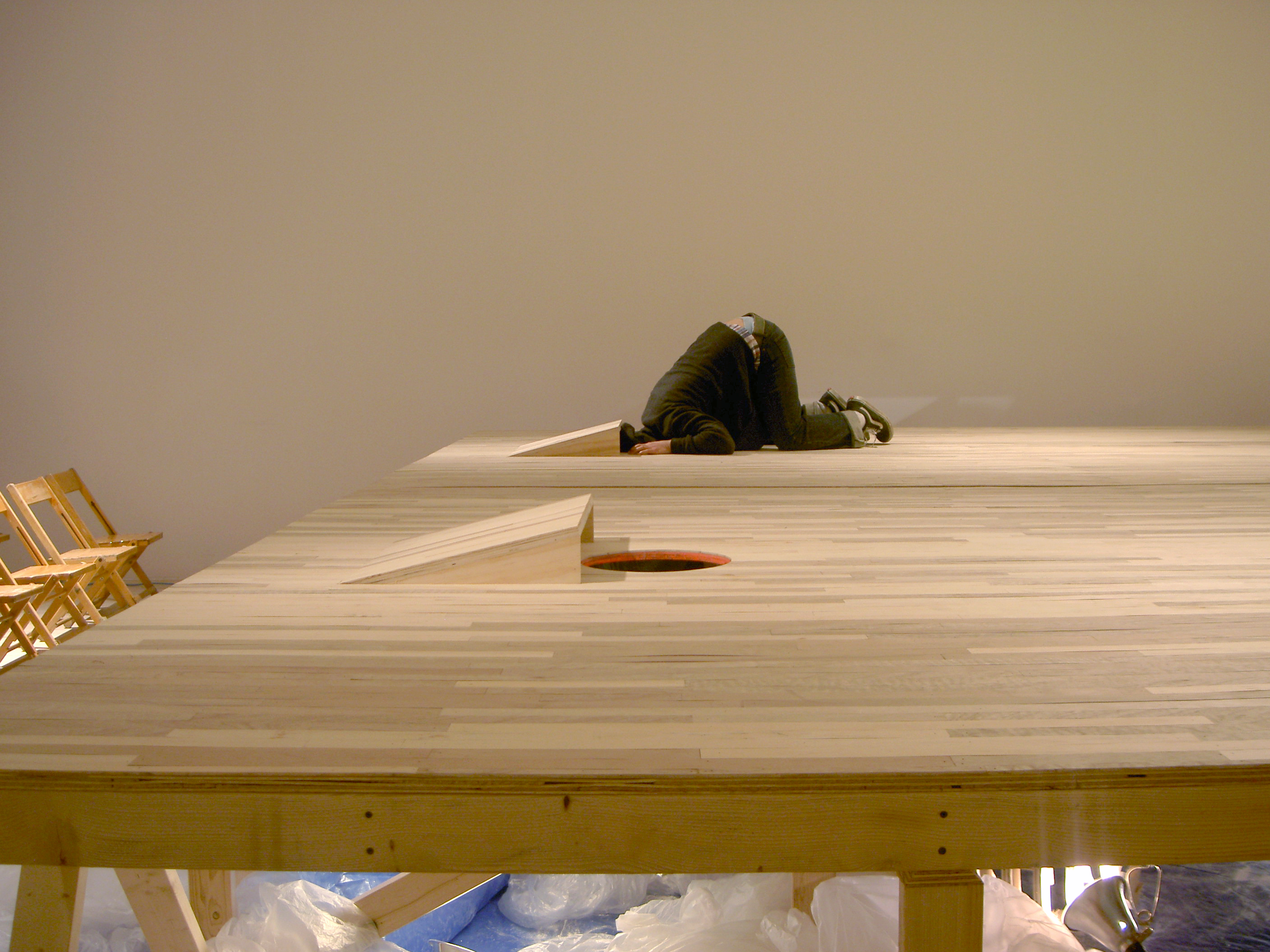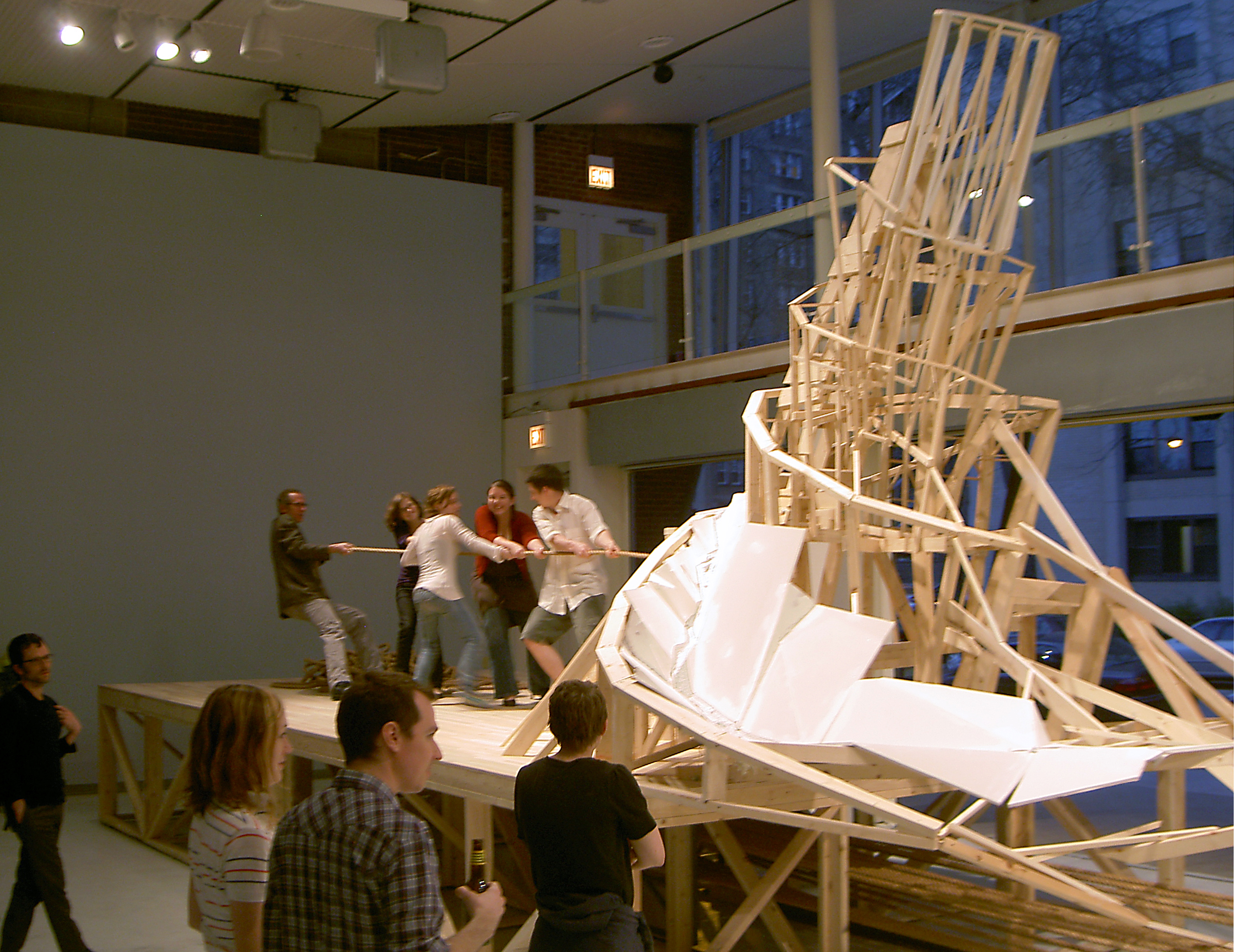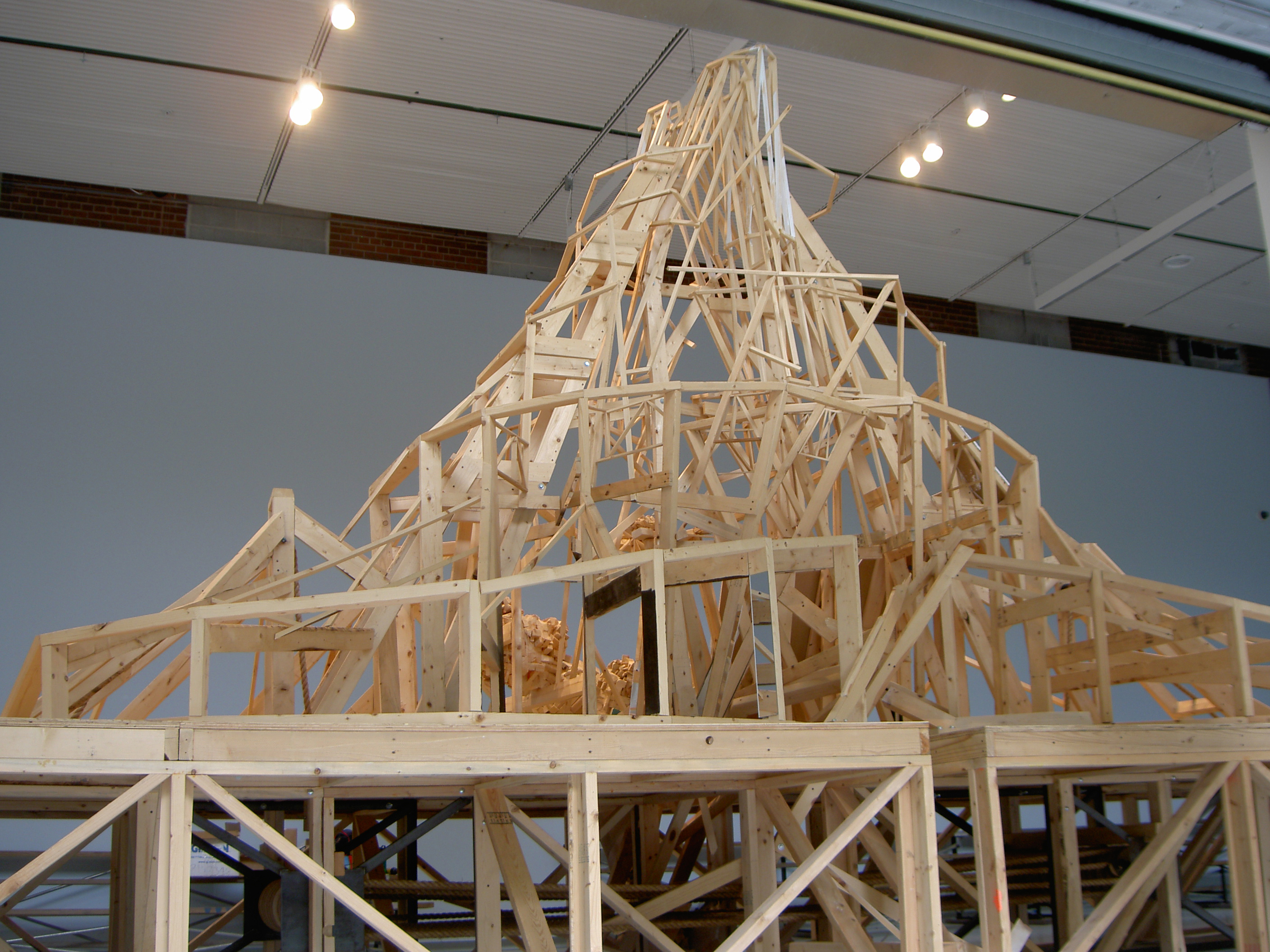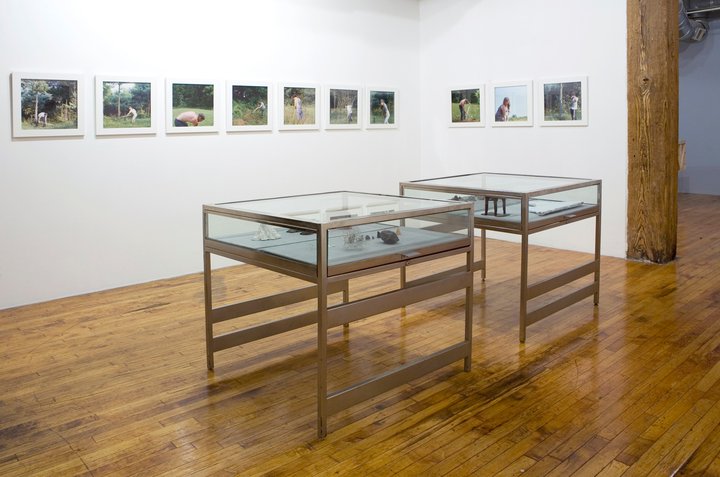Olympus Manger
Scene from ‘Olympus Manger’
Buffalo, New York
2006
Buffalo, New York
2006


 Doubled stages at 42” x 10’ x 28’ each
Doubled stages at 42” x 10’ x 28’ eachAudience seating, 2x4 studs, luan, lights, mixed media
‘Olympus Manger’ is a conceptual play that is being written as each scene takes place. As the first in the series, Scene from ‘Olympus Manger’ is a doubled stage that presents the viewer with a choice. As the viewer steps onto the stage, they take on the role of the actor. Atop the stage, the actor-viewer finds a stagehand’s hole on each side of the mirrored stage. By dropping their head into one of the holes, the actor-viewer is privy to a constructed scene of landscape – that of forest floor or a mountain valley. The head has been separated from the body and the body on the stage lay prone. It is this body that is the subject of the play.
Scene from ‘Olympus Manger’ features a life-size stage constructed from various materials to draw attention to the question of public access in society. This sculptural construction zone was open to study, rather than off-limits. Arranged from building materials such as wood, insulation foam, rubber roofing, and studs to create sculptural scenarios inspired by mountains and Japanese landscapes, as well as the confluence of architecture and nature exemplified by Frank Lloyd Wright’s prairie houses and Frederick Law Olmsted’s parks.
Publication essay by Shelley Bancroft and Peter Nesbett
Featured in New City Art and The Visualist
Olympus Manger Scene II
Hyde Park Art Center, Illinois
2008


 Installation view of staged towers / view of the ‘actors’ pulling / view of partial convergence, pulled 16 feet
Installation view of staged towers / view of the ‘actors’ pulling / view of partial convergence, pulled 16 feetdoubled stages at 19’ x 24’ x 16’ each, bleachers, 2x4 studs, sheetrock, mirror, 1800’ rope, pulley system
As part of the continuing series constructing a conceptual play, ‘Olympus Manger’, Scene II uses the image of Tatlin’s Monument to the Third International as a symbol of entropic social landscape. The two towers on a doubled stage were pulled together through the duration of the exhibition to form the image of a mountain, another venerated landscape. In this scene, the actors are laborers for a tectonic shift in the structure of an idealized image, one that is seen only by the reflecting audience.
*A large-installation involving the juncture between art, architecture, theatre and landscape. It is the second installation in a continuing series of a singular artwork.*
Featured in ARTFORUM
THE STAGEHAND’S UNSEEN
Threewalls, Illinois
2010
Threewalls, Illinois
2010
 People Digging Holes, Archival inkjet prints
People Digging Holes, Archival inkjet prints
 Installation view / Selections from Mountain Collection
Installation view / Selections from Mountain Collection  Door Kicks, concrete and mixed media, 2004 – 2010
Door Kicks, concrete and mixed media, 2004 – 2010 
 Views of Twinned Stage, 3’ x 9’ x 18’ 3/8” to 1” scale model, recycled pine studs, luan, mirror
Views of Twinned Stage, 3’ x 9’ x 18’ 3/8” to 1” scale model, recycled pine studs, luan, mirror
The Stagehand’s Unseen presents a synopsis of a play in its objects and documents. Situated between a collection and a tableaux with the potential to historicize the play’s origins. Handled as props in stasis, the objects of Olympus Manger are simultaneously sculpture and artifact – leaving the role of ‘artist’ latent: progenitor or activator, either/and.
Producing objects and peripheral activities (photographs, video, drawing), alongside her large scale installations, Kaczynski creates sculptural work that both carries embedded meaning and relationship to its origins while making available the transfer and reinterpretation of this meaning through the implication of an audience in handling and deploying those works. Olympus Manger uses the device of theater as its platform to examine landscape (image and function), built environment and psycho-social relationships by requiring an audience to choose between the role of ‘audience’ or ‘actor’ according to the placement of their body in relationship to the stage and their participation in the completion of the narrative. For the scenes from Olympus Manger, the audience was invited to move between audience and actor in ‘producing’ the work of art that was the play.
In The Stagehand’s Unseen, the objects take the place of the actors, laying out the materials of the play as landscape. Handling these objects as such also proposes narrative as topography, open to the wanderings of the individual. Positioned on a stage built to the perimeter of threewalls’ main gallery, the landscape of objects create desire through their stasis and limited accessibility, as the props remain just on the verge of being re-deployed yet on pause.
Featured in MutualArt